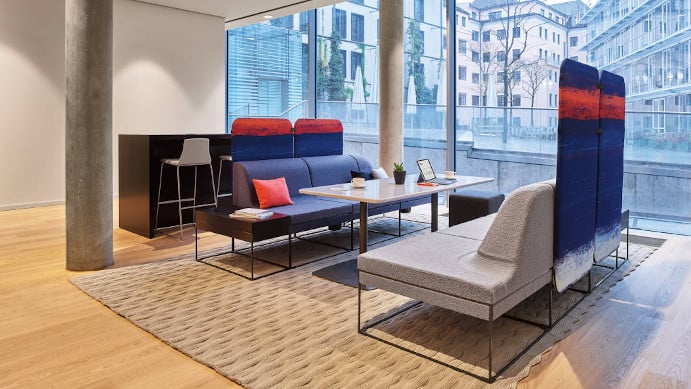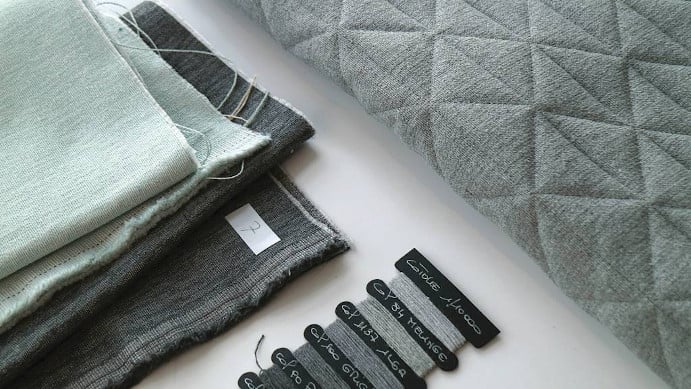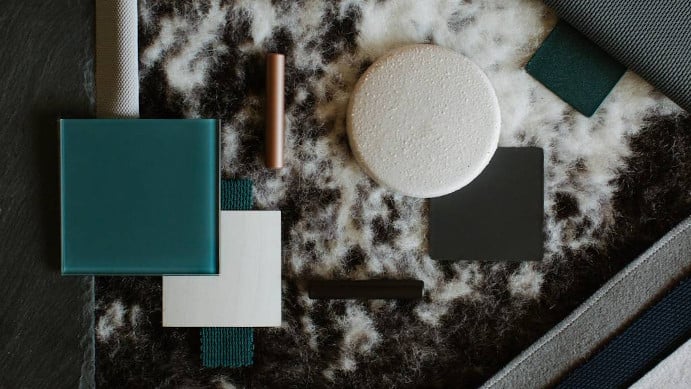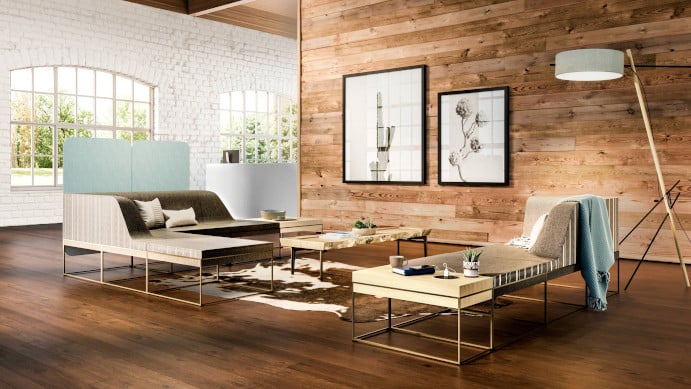The world of work is changing fast to instigate a new set of trends focused on themes of creativity, community and conscientiousness.
The full scale rejection of efficiency-based office environments is giving way to offices principled in sustainability, community, diversity and lifestyle. What design influences will be shaping the workplace in the coming year? Cherie Johnson, Steelcase global design director, and Julie Yonehara, Steelcase surface materials designer, work with teams based in Michigan, Munich and Hong Kong to understand why certain design elements are gaining traction. They shared seven emerging forces at play when it comes to workplace design in the year ahead.
CELEBRATE COMMUNITIES

Designers are explorers searching for inspiration in buildings being renovated into more creative workplaces, Johnson tells us. They are conscientious in saving elements of interior architecture that reflect unique parts of a found building. By connecting new work culture in a meaningful way to the collective identity of the location, community and brand, designers are creating authenticity in the workplace in the world. Johnson says workers want to feel more immersed in the story and meaning of where they work in lieu of feeling insulated to place. Thoughtfully finding and exposing authentic layers of history and creating new insertions is the new creative canvas.
Designers are considering how places are differentiated from our digital world and how a space in one city is unlike its counterpart in another. Urban centres around the globe date back to different time periods. Based on the era in which they were built, certain materials were available and popular at the time. Today, designers are able to connect with those remnants of the past and create more memorable, personalised spaces. This presents a creative tension celebrating the old and new within a space. The desire to embrace and understand history adds an interesting dialogue to the design process as people connect with the authenticity and uniqueness once hidden in century-old buildings.
GLOBAL INSPIRATIONS
Because technology allows us to be instantaneously connected to images and projects taking place all over the world, designers are finding inspirations around the globe. In 2017, hygge, the Danish word for cozy, became more prevalent in the workplace as people sought more informal and residential work environments. Now in 2018, Yonehara says wabi-sabi, a Japanese aesthetic based off nature and imperfection, is an influence resurfacing in the workplace. It’s the influencing ethos for ikebana, the Japanese art of flower arrangements meant to expand the observer’s appreciation of beauty, which Johnson says is also experiencing a resurgence.
TECHNO-CRAFT
Our global environment is helping us connect with cultures and also with craft. The manufacturing technologies and visual tools now available to designers allow them to tap into methods that used to be inaccessible to a broader audience. Shibori, a Japanese approach to dyeing textiles, and Sho Sugi Ban, a Japanese burnt wood art, are two examples Johnson shared of once unattainable crafts now being curated by designers to bring life into the office.
Yonehara says this juxtaposition of craft and technology is providing people with both authenticity and performance. Light fixtures and ceramic accessories are being created by 3D printers, for example, making these elements more available and more durable for the office in some cases. Craft is being redefined by technology adding different aspects of performance.
BIOPHILIA 2.0

When we’re surrounded by digital tools all day long, we yearn for a connection to nature, explains Johnson. Biophilia, the principle that human beings have an innate desire to connect and bond with nature, is experiencing a resurgence because of the balance we need from our digital world and the benefit nature’s restorative qualities provide our wellbeing. Biophilic elements are making more of an appearance in dedicated rejuvenation and focus areas because we need the therapeutic connection with nature more frequently throughout the day.
Time is a luxury and Johnson is seeing more rejuvenation and respite areas planned on every floor of an office. Office workers need respite especially as they are asked to do more creative problem solving. How do we find peaceful places to think or work with our hands? As we look at the ecosystem of settings people have to choose from at work, Johnson is seeing more nature in the physical environment so people can step away from their desk for an escapist moment. Designers will continue to explore new ways to manifest the restorative properties of nature in the workplace.
DIVERSITY OF MATERIALS

As the workplace hosts a broader range of cultures and generations, people are gravitating toward more natural and textured materials. Today’s first-time employees are comfortable with a variety of materials, colors and spaces. When people are offered a diversity of spaces, they will find the one that’s the best fit for them. Johnson explains it’s about more than just finding the right spot for different modes of work. Materials create a sense of emotional wellbeing. They help a broader audience find a place where they feel they fit.
In addition, Yonehara says she’s also seeing a heightened understanding of the need for respite within the workplace. Technology helps us be more productive, but that also means we need more opportunities to rejuvenate. She’s seeing a wider range of neutrals, translucent and toned down colors as well as textiles with a tactile and warm handfeel to offer calm and comfort in areas of the workplace.
DESIGNING WITH DATA
Data has entered the work environment, adding significant value to the conversation between designers and customers. Designers who talk about changing space and culture with customers now have the benefit of non-biased data to help eliminate the fear of the unknown. Does everyone need their own workstation or private office? Or would more private enclaves and collaboration spaces better serve the team? Sensors in the workplace can help organizations learn how often people are at their desks and what kinds of spaces will best support their people. Data can help designers and organizations get to an appropriate design solution, faster.
DIGITAL TRIBALIZATION
Technology is shortening the distance between the designer and the customer. People are so digitally connected, they are constantly developing and honing their personal design point-of-view. Visceral reactions to imagery found in our social media feeds and online can lead to the assemblage of a context that only fits our view. We “like” and “pin” what we’re drawn to, but then technology uses filters to provide us with more of our preferences, unintentionally narrowing our perspective.
This digital tribalisation changes the conversation between designers and their customers. Johnson says virtual reality and augmented reality will come to bear to bridge the gap between a designer’s holistic vision of the workplace and individual’s unique preferences. Worldwide revenues for augmented and virtual reality are expected to reach $162 billion in 2020, according to International Data Corp.







.png)


